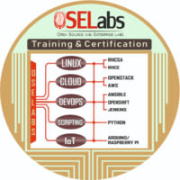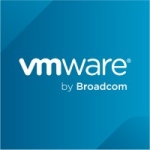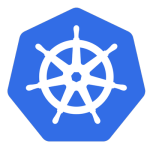
Red Hat OpenShift Container Platform Valuable Features
NM
Nelandran Moodley
Solaris UNIX Systems Engineer at Standard Bank South Africa
The features such as Red Hat operators, CI/CD, the monitoring stack, and the observability stack enhance our application scalability and management.
Building source to image helps us significantly here as well.
The cluster scaling features, such as the auto-scaling of cluster nodes and application replicas using horizontal and vertical pod auto-scaling, significantly impact our operations.
View full review »In terms of features in Red Hat OpenShift Container Platform, I find the orchestration itself quite useful for my customers because it integrates with lots of tools. For the platform plus, the security layer and automation itself are quite amazing.
Regarding how Red Hat OpenShift's policy-based governance helps to maintain application security at scale for my customers, that is also another education part we have to explain a bit. We face a struggle in explaining it to our customers as well, but the feature is quite good.
View full review »MS
Martijn Straatman
Technical Lead for OpenShift Platform at ODC-Noord
It is a little bit hard to determine which feature is the most valuable for our customers. We are never sure what our customers are doing with our OpenShift clusters. For us, the fully automated upgrades are valuable. We have to maintain the clusters in production. For us, it is very important that it does not take too much time to manage all the clusters and do life cycle management and upgrades. Since OpenShift 4, the upgrade path has become one of the most important features for us.
From a technical perspective, it has become a very good product. Since 4.9 or 4.10, it has become a very stable product.
View full review »Buyer's Guide
Red Hat OpenShift Container Platform
October 2025
Learn what your peers think about Red Hat OpenShift Container Platform. Get advice and tips from experienced pros sharing their opinions. Updated: October 2025.
870,701 professionals have used our research since 2012.
One of the most valuable features of OpenShift is its efficient deployment process. It automates rolling out new features, packaging the code, conducting security scans, and deploying to OpenShift.
Additionally, the auto-scaling feature ensures resource optimization by provisioning new nodes when utilization thresholds are met. The support for parallel processing in big data applications and consistent region-wise replication for stability are also crucial.
View full review »Security is the most valuable feature. If you get Vanilla Kubernetes, they lack security. Red Hat OpenShift comes in two flavors. One is OCP, OpenShift Container Platform, for which you need licenses. We're using that for production environments. For developing environments, there is the OKD Community edition of OpenShift.
They're very similar because OCP uses Red Hat CoreOS certified from Red Hat, but the community edition uses Fedora CoreOS. We're trying to deploy applications to be “Kubernetes agnostic” about the underlying infrastructure. Whatever we deploy should work on both OCP and OKD. In that pattern, we're also practically saving on licenses because we use them for the production version of OpenShift only. For development and testing, we use OKD.
Three years ago, deployment of the OpenShift cluster wasn't easy. It required a lot of knowledge of load balancers, networking, DNS and DHCP services, and virtualization. For version 3.11, OpenShift came with Docker as a container's run-time engine. From version 4, Docker was replaced with Podman, which is quite a good approach because Docker needs to run as a daemon with elevated privileges. Podman doesn't require such elevated privileges.
In the beginning, it was very difficult to install OpenShift even by following the documentation. There were some YouTube videos, but we struggled. That installation was named UPI, which stands for user provision infrastructure. That means that you need to deploy your own load balancers to configure them correctly and enter your DNS and domains. Only if everything is configured correctly, the OpenShift cluster will work.
Then, Red Hat came up with a solution. We use virtualization technologies on-premises. We do not use bare metal, so this was a very hard task on VMware, but then Red Hat from version 4.5. updated their installer to use IPI (installation provisioned infrastructure). For day-to-day jobs, we prepared one helper machine from which we can manage, deploy, destroy, and operate multiple clusters from one place. The bare installation of deploying an OpenShift cluster is now an easy task for us.
The stack in the software supply chain is one of the main reasons that we use OpenShift. When I came to this company, we bought hardware from IBM named Bluemix, and they used ICP, which stands for IBM Cloud Private.
Today, you can have Kubernetes on IBM, Amazon, Microsoft, Google, name it. You can also have different installations on various platforms like VMware and Tanzu, which are commercial products. Also, there are some open-source variations of Kubernetes like Rancher and Platform9.
At that point in time, IBM bought Red Hat. They very cleverly recognized that their product, IBM Cloud Private, was an inferior platform to Red Hat and OpenShift, and they invested a lot in Red Hat and in OpenShift. OpenShift is an enterprise-grade standard Kubernetes orchestration system for huge enterprises. There are more flavors of Kubernetes, but I believe OpenShift is practically a standard one, so whether or not you use it on the cloud or on-premises, OpenShift has a huge market share.
Vanilla Kubernetes lacks security. We have role-based access controls to tune and perform grant-level access to specific service accounts, roles and permissions. There is very good isolation between the namespaces. Practically, we have four clusters on-premises for each huge specific production grade system. Two of those clusters run several independent environments that are different from each other on the same clusters (dev, performance, smoke, test). Only production clusters are separate from those. No deployment sees another deployment, so they cannot interfere.
We connected our OpenShift platform with our LDAP, so we also have security that shows who accesses it and what permissions they can perform over the operative clusters and applications that run on them. We have a DevOps team, developers, and infrastructure guys, and there haven't been any complaints so far about the day-to-day usage of OpenShift. I believe all the aspects of security that we need are practically covered from both the user perspective and the application perspective.
View full review »The most valuable feature of the solution is that it has a lot to offer to developers, so they don't need to care about the infrastructure or basic setup of the containers, so you can just jump in and develop. The product can do many functions on its own.
I use Red Hat OpenShift Container Platform's GitOps functionality. In terms of the tool's GitOps functionality to help with a more secure and faster software development process, I would say that my company started using it for deploying the cluster, handling backup, and testing purposes. My company has started promoting the product to developers since we don't have enough in-house developers. Most things are project-oriented in our organization, and every developer might not have the tools or have never used such tools. My company has to promote the product and give it to the developers.
In terms of the time required to set up an infrastructure without Red Hat OpenShift Container Platform, I would say that if an infrastructure is present, our company just requests a new project, after which the next steps are all automated. The tool may take a longer time to provide a ticket than the real-time it does to provision.
The use of Red Hat Advanced Cluster Security (ACS) to more securely build and deploy cloud-native applications is a pain point for my company. My company would actually like to get Red Hat OpenShift Platform Plus but it is not yet available from Arrow. If the tool was available from Arrow, my company would have used the solution to manage our cluster security.
The use of Red Hat OpenShift Container Platform has made the development lifecycle faster for my company. I can't provide an exact number on how the development lifecycle has become faster, but I can say that you need to provision servers to prepare the environment for the developers and to give them access to open up firewall rules, so it works a long way in reducing the time from two weeks to one day.
Red Hat OpenShift Container Platform has helped my company achieve infrastructure cost savings, but it is hard to calculate. I know that as we had it on an on-premises infrastructure, it was there and paid for years ago. Red Hat OpenShift cloud services were on top of Red Hat OpenShift Container Platform, but at the moment, it is hard to say if the tool has helped my company achieve infrastructure cost-savings. If you look through the migrations and the measurements of the real usage on CPU, memory, and the applications on an on-premises model, it would be possible to lower the costs, but the costs may be more for administration or operations and for securing all the stuff. The aforementioned area consists of the product's real benefits besides the infrastructure.
My company is not driven by how many apps we are able to deploy with Red Hat OpenShift Container Platform. All new apps should be there, and our company is trying to follow it with the tool, but I would not say that using Red Hat OpenShift Container Platform means having more apps.
Comparing Red Hat OpenShift Container Platform with other Kubernetes platforms to make our company's Kubernetes environment operational, we tried EKS, which provided us with the infrastructure we needed. Red Hat OpenShift Container Platform has many benefits, and it has been a turnkey solution for me right from the start. Red Hat OpenShift Container Platform has been implemented on top of different stuff so as to have a full solution, but I would say that it is a turnkey solution with which you can start, as you get to have many things in place that are not there in in the plain Kubernetes. Red Hat OpenShift Container Platform offers a lot more for developers than what plain Kubernetes can provide.
View full review »Especially the security side is nice. On the other hand, there is firm support in the background. This is helpful for me since I am also native to Bandit system. On OpenShift side, I can get support from Airflow. It is a good aspect. It is important for critical systems.
View full review »The solution's security throughout the stack and the software supply chain is very reliable. When it was on-prem, it was by default secured by our company firewalls and security tools, and now it's in the cloud, which has its security and systems in place. This provides stability to our infrastructure.
We communicate on OpenShift under STDPS and TLS 1.2-based protocols, so whenever we contact our front and backend systems, we have certificates, handshakes, and the TLS protocols in place. These prevent any unauthorized access to our services, which makes out job easier and allows us to prioritize security.
OpenShift provides the flexibility and efficiency of cloud-native stacks while enabling us to meet regulatory constraints. When we first onboarded the solution, we evaluated that it would not cause any regulatory limitations, and it's the only platform that was introduced to the application teams as a result. The main regulatory concern for a container that's being consumed by any service is security, and the solution provides this.
The product's automated processes affected our development time, which is our most significant time saving, and when development time is reduced, so is the time required for production deployment. If the developers consume less sprint time, we minimize deployment time and increase overall productivity. This way, OpenShift provides our teams with a lot of flexibility and capability.
View full review »One of the best features is monitoring; we can see metrics via visual aids when the load increases, for example.
The software is user-friendly and straightforward to use, which is favorable to a developer.
The system also takes care of itself regarding scaling; the platform can up and downscale automatically depending on demand.
With OpenShift, there is no need to learn new technology, as the skills required for Kubernetes carry over; the commands are interchangeable. Therefore, OpenShift is a developer-friendly tool.
We use the solution on the vendor's OpenStack Platform, and in terms of the ease and speed with which it enables us to create infrastructure, it's very straightforward. We can set up an environment within a day or two, and it's a very convenient way to develop.
The infrastructure created by the solution on the OpenStack Platform is very robust; we created communication metrics: a shield where all VMs, master, and worker nodes communicate from subnet to subnet. We designed these and gave them to Red Hat, where they developed the ISO clients for deployment from day one. After gaining hands-on experience, we could create our own and implement a cluster.
OpenShift is highly effective at creating infrastructure that can be flexibly sized to meet specific needs on the OpenStack Platform. The minimum basic configuration is three masters, three infra, and two worker nodes. When a load starts passing through this setup, and we reach a certain threshold, say the worker machines are running at 60%, we can add another node, another VM. We have added eight to ten VMs in this way before. After experimenting with different configurations, we get a feel of which one to implement for a specific use case within the production environment. If we want to scale up, we add worker nodes; nothing else is required.
OpenShift provides solid security throughout the stack and the software supply chain; the solution has an inbuilt image registry and doesn't allow outside images, making the system more secure. The platform also features a Compliance Operator, which assesses the compliance of API resources and the nodes running the cluster.
View full review »The most valuable features of OpenShift include its advanced security, integrated DNS system, built-in pipeline management with Tekton, enhanced networking routes, and dedicated platforms for DataOps and MLOps. These features make it a robust choice for handling enterprise-level tasks securely and efficiently.
View full review »It's an easy platform to use.
The user experience and security are some of the key features. There are two key differentiators that you have certainly worked on from the customer's perspective.
Integrating the product into our existing infrastructure was easy. We did not face any issues.
View full review »The tool's most valuable features include high availability, scalability, and security. Other features like advanced cluster management, advanced cluster security, and Red Hat Quay make it powerful for businesses. It also comes with features like OpenShift Virtualization.
View full review »The operating system has a live update and is more secure than any other. It's made for Atomic OS, a lightweight OS new to the market. I also like the source-to-image capabilities. The customer can directly deploy their applications from the repository. It's a highly flexible and easy way to deploy into production.
It's a simplified network for exposing their application to the outside world. Red Hat has good built-in oversight, where it monitors the cluster performance and records everything built inside the cluster besides OpenShift. Of course, Red Hat is a pioneer in this kind of auditing.
Telecom clients can use OpenStack as their private cloud to access secure resources on demand. When they deploy to OpenShift, it's easier for them to have a cloud-like field on their own data center. OpenShift and OpenStack are integrated. It's an ideal combination. The infrastructure created in OpenStack is a robust private cloud solution. If the developer wants to consume resources within their organization per the utilization, OpenStack is the right platform for building their private cloud.
In terms of innovation, features, and functionality, a public cloud has much more than OpenStack by itself. I prefer OpenShift on AWS or Azure Cloud. That has made it easier for the customers to benefit because they don't need to worry about their managed solutions anymore. It's the customer's choice to manage services through OpenShift or on-prem. OpenShift can be run on all platforms, including VMware, public, private, etc. It's a great solution from a consumer choice perspective.
The codes are customized and fixed only for their own environment, so it's more secure, but we cannot assure the client's security. However, the code is validated, and Red Hat support will address any vulnerabilities or security issues that arise.
View full review »The most valuable feature of this solution is its scalability on demand, which allows for potentially lower costs, and Built-in resiliency. Those are the three most important ones that spring to mind.
View full review »The most valuable are security features, particularly when operating in the cloud. It is considered a necessity, especially in our industry, given the critical nature of the infrastructure.
AM
Ashish Maini
AWS Architect at FIVE 9 GROUP, INC
The most valuable feature for me in the OpenShift Container Platform is the option to manage different containers and environments and also being able to switch among them.
View full review »Autoscaling is an excellent feature that makes it very simple to scale our applications as required.
The tool's console looks fantastic, and the UI is intuitive; we can easily check port health, locks, deployments, and services.
Another great feature is monitoring, as we can integrate and monitor logs.
We use the product's CodeReady Workspaces, and they reduce project onboarding time. We have automated templates and use those scripts to create projects and clusters within OpenShift.
View full review »The product is stable, reliable, and easy to use, from a well-known company, has a large volume handling capacity, and more and more organizations are moving to OpenShift.
The scale-up and scale-down functions of the product's UI are excellent.
The deployment is elementary and seamless.
We use the product on the vendor's OpenStack Platform, and in terms of speed and ease with which it enables us to create infrastructure on the OpenStack Platform, it's the best and most straightforward approach. OpenShift is excellent compared to other vendors like Google Kubernetes Engine and Azure Kubernetes Service; it's easier to use, more reliable and handles volume better.
The solution is very good at creating infrastructure that can be flexibly sized to meet specific needs on the OpenStack Platform; there are options to increase and reduce the size to meet volume demands.
The tool's security throughout the stack and the software supply chain is excellent; we are a large bank, so security is a top priority.
OpenShift's security features are highly capable of running business-critical applications. The solution is exciting, and I'm looking forward to getting more hands-on experience.
The solution's automated processes are excellent, and OpenShift has good integration potential with GitHub and Tangible, allowing a lot of code deployment automation. Plugins are also available for other CI/CD pipeline tools like Jenkins Pipeline, reducing our development time.
View full review »In OpenShift, there are a lot of things that are good as compared to any other Kubernetes flavor. The console or the GUI of OpenShift is awesome. You can do a lot of things from there. You can perform administration tasks as well as development tasks.
The RBAC user management that comes packaged with OpenShift is not there in other Kubernetes. That's a very nice feature.
The upgrade mechanism is also very good. The upgrades are pushed by Red Hat, and with just the click of a button, your OpenShift cluster gets upgraded. That is another very nice feature. These are a couple of things that I like.
The architecture is the best. The solution is scalable if you are on a container-based solution. I can easily spin a new container or create another image, so that was the benefit. It was scalable, and I could easily ramp up and ramp down the services based on the need.
View full review »EB
Eduardo Beltran
Team Leader at b-yond.com
I find the security features and use of operators in OpenShift Container Platform highly valuable. The container update capabilities and OpenShift data foundation for storage are also important features.
View full review »The usability and the developer experience. The platform has a centralized consultant that is easy to use for our development, operations and security teams.
People choose OpenShift Container Platform because it's an open-source and Red Hat Kubernetes product. Red Hat has made Kubernetes command-line oriented, obscure, and hard to learn. OpenShift is easier to learn for a newbie, especially for someone who has not used CLI. The support structure of OpenShift is pretty good and absolutely terrific. The bug fixes and patching capabilities, along with the whole ecosystem of OpenShift Container Platform, are very mature from a technical standpoint or from an enterprise standpoint. If you are a big company and invest a lot of money in certain solutions, you need and expect top-notch support and features of very high quality. OpenShift Container Platform is a very good way to get in started in this whole containerization journey for some companies because the underlying product is from Red Hat, which has its own benefits. The aforementioned factors play a role in the decision-making process of most companies.
Centralized control of container resources is most valuable.
View full review »They have built on top of Kubernetes. Most of the Kubernetes latest technology is already supported by the solution. The only thing is, we need to change our view of the routes.
View full review »I have found the ability to scale up is most valuable. If you do not have any hardware limitations, you can scale up during your busy timelines. It is an excellent tool so you can deploy these products to any of the public clouds. If the regulations allow you, it is straightforward to deploy your codes to another public cloud or another platform. OpenShift Container Platform gives you an opportunity to be flexible.
Everything is packaged into OpenShift Container Platform, whereas with Kubernetes, you have to create many operators. With OpenShift Container Platform, you just have to point and click.
The most valuable feature is that the solution can be deployed in the cloud which removes the expense of a server. Everything you need is provided in the cloud where you can make clusters, add masters and worker nodes, and install ports.
The solution includes an integrated file agent and a control center director that embeds within the release. It is much easier to configure the install or file agent through the GUI than having to work on command lines in a CLI.
View full review »AA
Awais Afzal
Digital Solution Technical Analyst at ADIB - Abu Dhabi Islamic Bank
The auto scalability feature, which is based on smart agendas, determined from pre-prepared rules is the most valuable feature. You can also create different routes for deployment. Deployment types can be provided with an identifier, such as AB deployment. This really helped in rolling out releases without disrupting services for the end-users.
Secondly, there is the ability to control at a granular level. For example, they can release two versions of the same service and control the traffic towards it to a specific percentage. Other organizations don't seem to use this feature in the same way we did. Additional rules can be specified to determine individual versions of a service, and rules for governing users access to such services.
Marketing can also make use of OpenShift by analyzing logs to provide useable data. This is one of the features that I really like about OpenShift. It is also a secure environment, with user access configurable at a very granular level. Depending on the API and the ecosystem, it is possible to completely plug and integrate. You control how the deployment works and the testing process.
With OCP 4.x the capability of configuring and controlling your ingress controller has also introduced an immense ability to provide an experience which is pertinent to a particular app. With this we can introduce app specific compliance and security without enforcing similar requirements on all services, which was the case with earlier versions.
View full review »Some of the primary features we leverage in the platform have to do with how we manage the cluster configurations, the properties, and the auto-scalability. These are the features that definitely provide value in terms of reducing overhead for the developers.
Also the Kubernetes cluster management or orchestration is provisioned through the UI and the CLI.
We are using the Red Hat OpenStack OpenShift Platform. It is much faster in terms of deploying the cluster. As of now, our experience rolling it out is more on the on-prem, but I think with the 4.0 version there is a little bit of a change regarding the way it is deployed, either using the installer base or user-driven installations. It takes a couple of days just to roll out the entire cluster and configure it so that it is ready for the applications or the services to be deployed on the cluster.
The robustness, the availability in terms of resilience, and the service availability with the multiple cluster nodes configured automatically, is pretty good. Even if load balancing is required across multiple clusters with the SDN network, it's pretty good. We haven't had many issues when it comes to robustness. We are happy with the performance provided.
From our experience on the on-prem, we know that there are 10 layers of security provisioned by the OpenShift platform, starting from the kernel level, and including the clusters and the container level. That definitely helped us to achieve a lot of enterprise security requirements in terms of accessibility and managing the infra part or the cluster part.
For running business-critical applications, the solution's security is pretty good. We are able to achieve consistent efficiency and availability for all our critical service requirements, when spanned across multiple DCs with the load balancer and DR solutions. We don't have to spend much on it, once we orchestrate the cluster with the proper configurations. At that point, everything is taken care of automatically.
View full review »I like the Flexibility of the solution.
View full review »The most valuable features of Red Hat OpenShift include its integration with Kubernetes and the user interface, which enhances the end-user experience and accelerates the deployment process. These features contribute to increased productivity and efficiency for our developers.
View full review »The platform's most valuable features include cost reduction through VM application migration to containers, scalability for controlling memory and CPU usage, and the reliability offered by application containerization.
View full review »The product has a CentOS operating system providing a stable and compatible foundation for hosting Red Hat OpenShift clusters. It helps in creating an architecture framework automatically. It makes it possible to control the CentOS API server and Kubernetes console.
View full review »JL
Jinpin Lim
Owner at Inventrics technologies
It is very lightweight and can be deployed very fast, especially when it comes to containers. It can spin the web and the DB very fast, so we don't need to deploy the server and the VM. Everything is in the container.
View full review »OpenShift provides tools that tell me everything I have on a container, and I can make it on-premise or on a cloud infrastructure.
View full review »VS
Vinayak Sharma
Senior Member Of Technical Staff at NEC
Our customers like the service mesh, so we integrated these to improve customer satisfaction.
View full review »The OpenShift platform is built on the Docker Ecosystem. The image we create is easily portable. OpenShift is built on top of the Docker Ecosystem which is one advantage.
It has run time. It has all the binders required. Once built and once tested that it is working, it'll work wherever it's deployed.
On OpenShift, it's easy to scale applications. We can easily scale up or scale down.
It's a container platform. It uses resources efficiently - specifically on the CPU RAM limit. We can create as many containers as needed. The underlying resources are utilized well.
It's intuitive and user-friendly. They have a very good UI, through which we can add all the artifacts required for OpenShift. Also, they are providing API through which also we can work on the projects. Apart from that, they also provide the CLI, a command-line interface. In my view, I think it's very good. I don't see anything more that is needed.
The banking transactions, inquiries, and account opening have been the most valuable.
View full review »The best feature is the management for the port life cycle, which automatically recycles, pulls, and scales up and down based on needs and requests.
View full review »The most valuable features of OpenShift are the advanced cluster manager and advanced cluster security with the StackRox.
View full review »AK
Artemii Kropachev
CTO and Principal Architect at Li9 Technology Solutions
Openshift is a very developer-friendly product.
The self-service allows us to deliver applications fast to production.
The functionality is quite good, even though we may only use 30% of it.
View full review »MI
MuhammadIbtehaj
Enterprise Solutions Architect at 0
The platform's most valuable features are its regulatory compliance and enterprise support. It does not offer significantly unique features compared to Kubernetes or Docker. The primary advantage is its extensive support and integration with Red Hat's solutions.
View full review »More tools are available in OpenShift Container Platform to maintain and manage the clusters.
View full review »It's a good tool and a very comprehensive tool. There are a lot of things to explore. I'm still exploring, I'm not done with it yet.
The UI is good.
It’s user-friendly.
The product offers good customization.
View full review »PS
PaulSorelli
IBM Data & IA Technology Consultant at a tech services company with 10,001+ employees
OpenShift is a user-friendly container platform with a solid GUI that helps you follow what is going on and gives you an overview of all your clusters. It's more user-friendly than the Kubernetes itself. The interface helps you learn the platform and provides access to some features or specific comments.
View full review »The management console is easy to use. You can easily install some components with OpenShift Operator.
Red Hat's security throughout the stack and software supply chain is good. It is a lightweight operating system. You don't have to worry about the security patches on the system. You can update the entire environment with security patches, which is a nice feature.
View full review »Buyer's Guide
Red Hat OpenShift Container Platform
October 2025
Learn what your peers think about Red Hat OpenShift Container Platform. Get advice and tips from experienced pros sharing their opinions. Updated: October 2025.
870,701 professionals have used our research since 2012.












































